Sling Pilot Academy Airport Noise Reduction Efforts
What We are Doing to Reduce our Noise Footprint
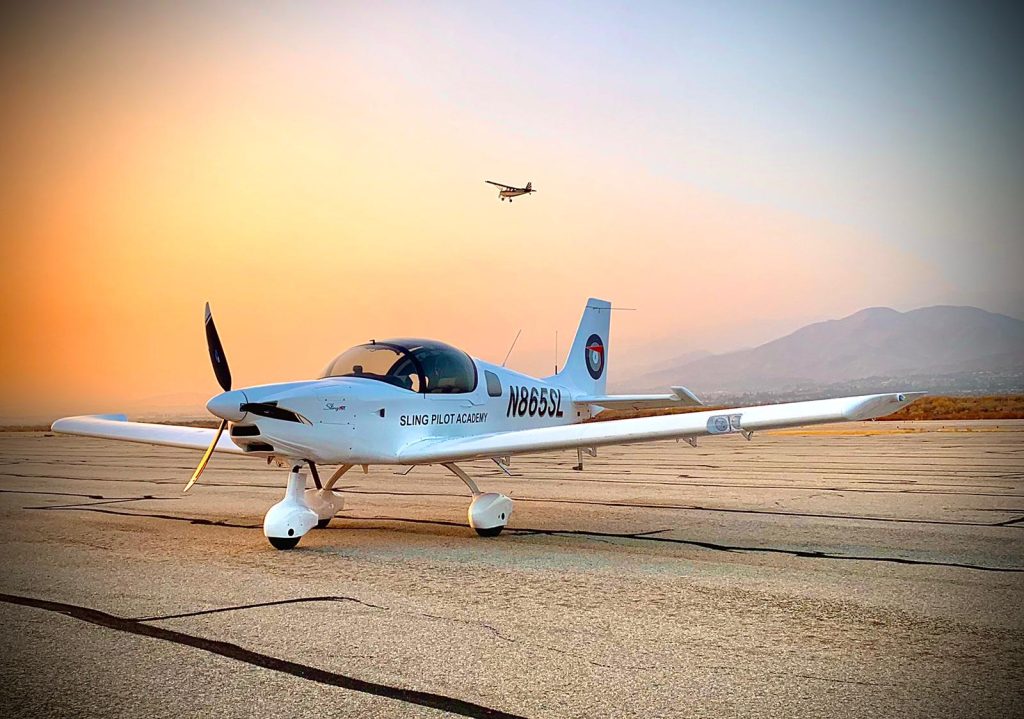 Sling Pilot Academy cares about our community. We are residents as well as business operators. We do the following to minimize our impact on the community:
Sling Pilot Academy cares about our community. We are residents as well as business operators. We do the following to minimize our impact on the community:
- Quietest Airplanes
We have selected with quietest airplanes available for our flight training. Our airplanes never exceed the noise limits imposed by the City of Torrance. Normally, our airplanes are in the low 60 dBs – which is lower than ambient vehicle traffic noise. - More environmentally-friendly
Our airplanes primarily use Unleaded automobile gasoline instead of Avgas (aviation fuel, which still contains some lead) - Voluntary Noise Abatement Policy
We follow a voluntary noise abatement policy which exceed the requirements of the enforceable City of Torrance policy. We enforce our procedures and have dismissed pilots and flight instructors from our organization for not complying with these procedures where possible. - Noise Testing
 We have conducted noise tests to evaluate which procedures result in the lowest impact to the local community. We are constantly improving our procedures to have the least impact. Our most-recent testing concluding that reduced RPM when overflying noise-sensitive areas had the best results, hence our adoption of a procedure that has our pilots leveled off after a climb before overflying noise-sensitive areas.
We have conducted noise tests to evaluate which procedures result in the lowest impact to the local community. We are constantly improving our procedures to have the least impact. Our most-recent testing concluding that reduced RPM when overflying noise-sensitive areas had the best results, hence our adoption of a procedure that has our pilots leveled off after a climb before overflying noise-sensitive areas. - New Technology
We are exploring engine modifications, such as exhaust after mufflers, to further reduce our noise levels. - Meeting with the Community
We have met with members of the community on multiple occasions and shown them our operation and efforts to make the least impact on the community. Almost completely, they have become convinced that our airplanes are not the primary aggravators as it pertains to noise. Older airplanes, and transient airplanes from other airports are more-often flying lower and producing more noise over their neighborhoods.
Sling Pilot Academy, while providing flight training (part of our nation’s critical infrastructure) to the next generation of airline pilots, will continue to work on ways to reduce our noise footprint.
Our Value to the Community
Sling Pilot Academy (and The Airplane Factory) offer employment and revenue to the City of Torrance and its residents.
- We employ over 103 people, many from the local area.
- We have won awards from the South Bay Workforce Investment Board, and the US Senate, for our training and placement of local apprentices
- We lease 32 rooms in the local area which provide housing for our Students, many from out-of-state.
- We have close to 200 full-time students and over 200 part time students, many of which come from outside of our state
- Our Students patronize local restaurants and businesses, providing income to Torrance businesses
- We pay Taxes to the City of Torrance for sales, purchases, fuel purchases and land leases
Our Contribution to the Local Economy
With over 103 employees and 200 students in the program there is a total of 303 individuals spending in the local economy. Based on rough calculations, they each would spend about $2,000 per month on housing, $300 per month on food, and $50 on transportation (gas for a car). That’s a total of at least $2,350 per month per person, or a total of $712,050 per month spent into the local economy.
Also, the Academy spends over $50,000 per month on locally-purchased auto fuel–again bought in the local economy.
And, each student pays about $7,000 for check rides and exams during their 9-month program. These fees are paid to local FAA officials and designees. That adds another $58,333 per month paid into the local economy.
So, just considering the students’, employees’ and aircraft contributions to the local economy, that is $820,383 per month. It is a well-documented fact that $1 added to an economy results in at least $2.50 in total community spending. Applying this economic multiplier to the above results in a conclusion that the Sling Pilot Academy is worth a minimum of $2,050,958 per month to the community, or $26,611,500 per year!
Sling Pilot Academy Gives Back
Sling Pilot Academy regularly holds events to give back to the community:
- We donate our airplanes regularly for Young Eagles flights, introducing teenagers to aviation at no charge
- We donate our airplanes to Women in Aviation events several times per year, introducing young women to the world of aviation
- We hold STEM events several times a year for Torrance School Students who come and fly our simulators and learn how to build airplanes in our airplane build facility.
Noise Tests
Study Compiled and Authored by Jim Gates
Sling Pilot Acedemy makes approximately half of all takeoffs and landings at Torrance Airport. They are acutely aware of their effects on the neighbors. The Academy currently has policies that reduce those effects significantly:
- they use the quietiest modern training aircraft available–the Sling NGT;
- those aircraft use unleaded automobile gasoline.
- When using the south traffic pattern, company policy requires a climb to 1100 MSL and a reduction in RPMs prior to turning downwind. *(Now changed to completely eliminate the South Pattern)
- Use minimum safe RPM on downwind to minimize noise.
- Failure to comply is grounds for termination or dismissal from the Academy.
The Academy continues to evaluate other procedures and policies that could further reduce their footprint.
On May 25, 2022, the Academy performed a number of test flights to measure the noise generated by their standard training aircraft, the Sling-2-NGT. Although the Academy had already taken many steps to minimize their noise footprint, they wanted to evaluate whether noise could be further decreased by raising the pattern altitude of their operations.
Methodology:
The aircraft selected, Sling NGT, was typical of the training fleet at the Academy and was loaded to simulate a typical training flight with a student and instructor.
- Two main parameters were tested during 17 flights:
- propeller rotation speed from 1640 to 2144 RPM, and
- aircraft altitude from 900 to 1350 feet above mean sea level (MSL)
The test flights were made over Butcher Hill, where the maximum noise levels were recorded for each flight. Aircraft altitude and engine RPM were downloaded from the aircraft’s electronic flight instrument system and correlated with the times the aircraft passed over the recording points.
Discussion:
A major source of aircraft noise is the propeller. As propeller tip speed approaches the speed of sound, the noise it generates increases. The greater the distance from the propeller, the lower the noise one perceives.
| Traffic patterns are used by the control tower and the pilot to sequence each aircraft into existing traffic and to permit adequate spacing from preceding aircraft for a safe landing. The length of upwind and downwind legs are adjusted during flight to allow for this to occur. Thus, any aircraft’s path over the ground is not always the same.
At airports like Torrance Airport, the “standard” traffic pattern consists of a climb on runway heading in the upwind leg to approximately 300 feet below traffic pattern altitude and then the turn to cross wind leg is imitated. The climb then continues to standard pattern altitude (1,100 feet MSL at Torrance) in the cross wind and downwind legs. |
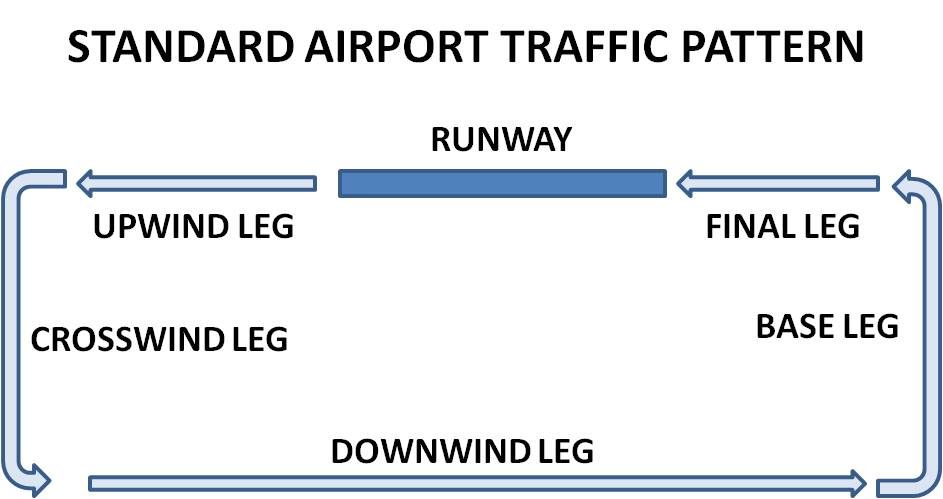 |
In the south traffic pattern at Torrance, this sometimes puts an aircraft over populated hillside areas (which are nearly 300 feet MSL) while it is still climbing at high power. Therefore, the Academy prefers their students to use the north runway whenever possible. If the south runway is the only possibility, the Academy requires that their aircraft reach pattern altitude and reduce propeller RPM before making the cross wind turn. However, this requires a longer upwind leg prior to making the cross wind turn as compared to the standard pattern configuration. This makes the ground track over populated areas even longer than when the “standard” pattern is flown. It also places the cross wind leg farther from the airport.
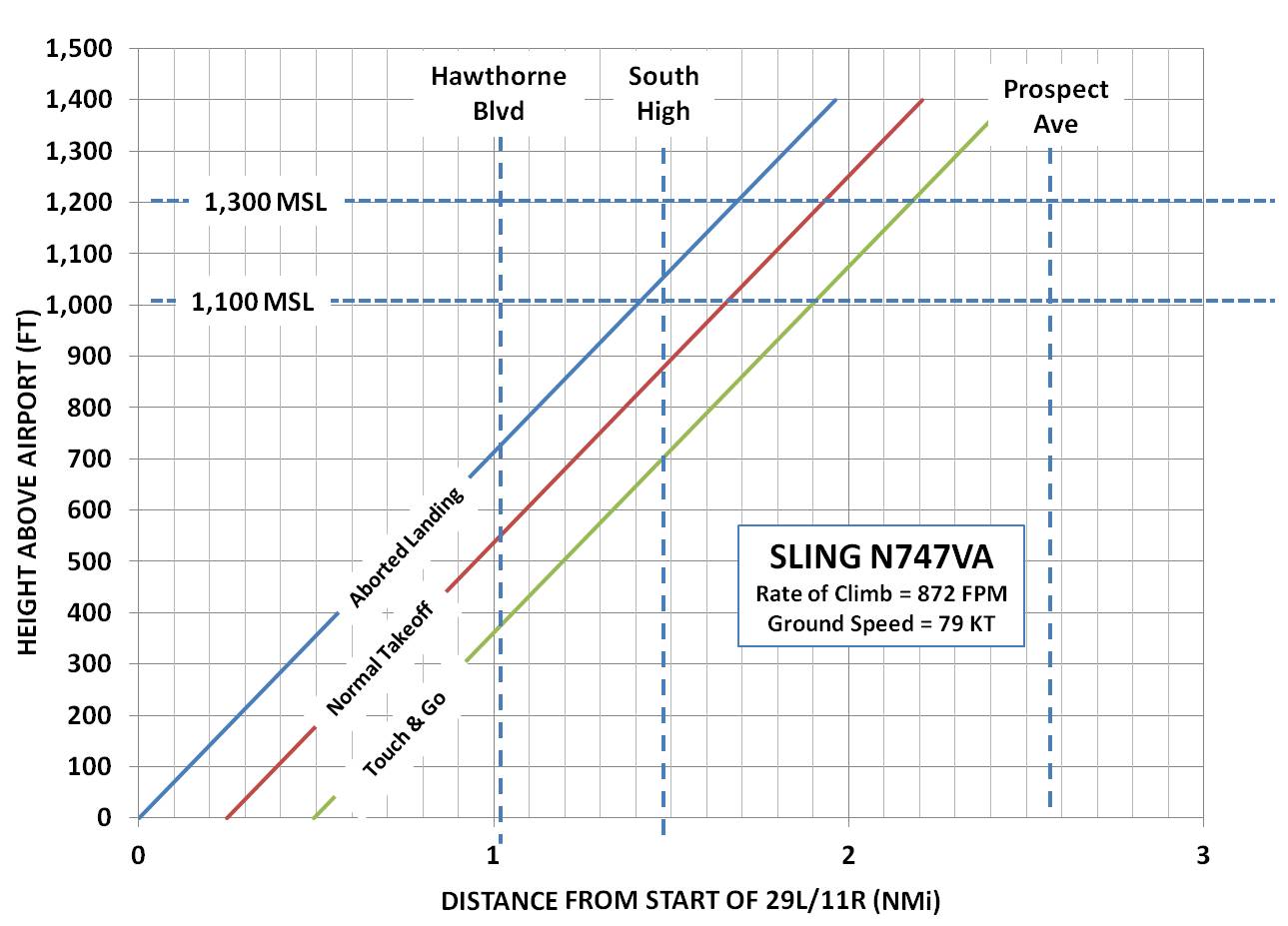 |
This graphic depicts the point at which the test aircraft could reach a specific altitude when climbing straight out from the runway. During a touch-and-go operation, it would fly significantly past South High and almost halfway to Prospect Avenue before reaching a 1,300 MSL pattern altitude.
The control tower, on several of the flights, questioned why the pilot was not turning cross wind at 800 MSL. Later conversations with the tower personnel revealed that they found it very difficult to maintain visual contact with the aircraft as it got further from the airport (and therefore they could not assure separation of aircraft). This adds a safety concern for using higher altitudes in the pattern. The Sling NGT is capable of climbing fairly steeply. Other training aircraft using Torrance Airport may not have that capability–some may only be capable of climbing at 500 feet per minute. These aircraft would not reach 1,300 MSL until almost to King Harbor, thus tracing a much longer ground track over a populated area while at a high power setting and making visual contact from the control tower very difficult–if not impossible. |
| Sound recordings during the test were made at three locations–all under or close to the test aircraft flight path. The most reliable measurements were made atop Butcher Hill (Recording Point #2). This location is the highest in the area (432 feet MSL) and was several hundred feet from any structures that could reflect sound and from streets or other human activity that would distort the readings. The test aircraft flew directly over Butcher Hill each time. | 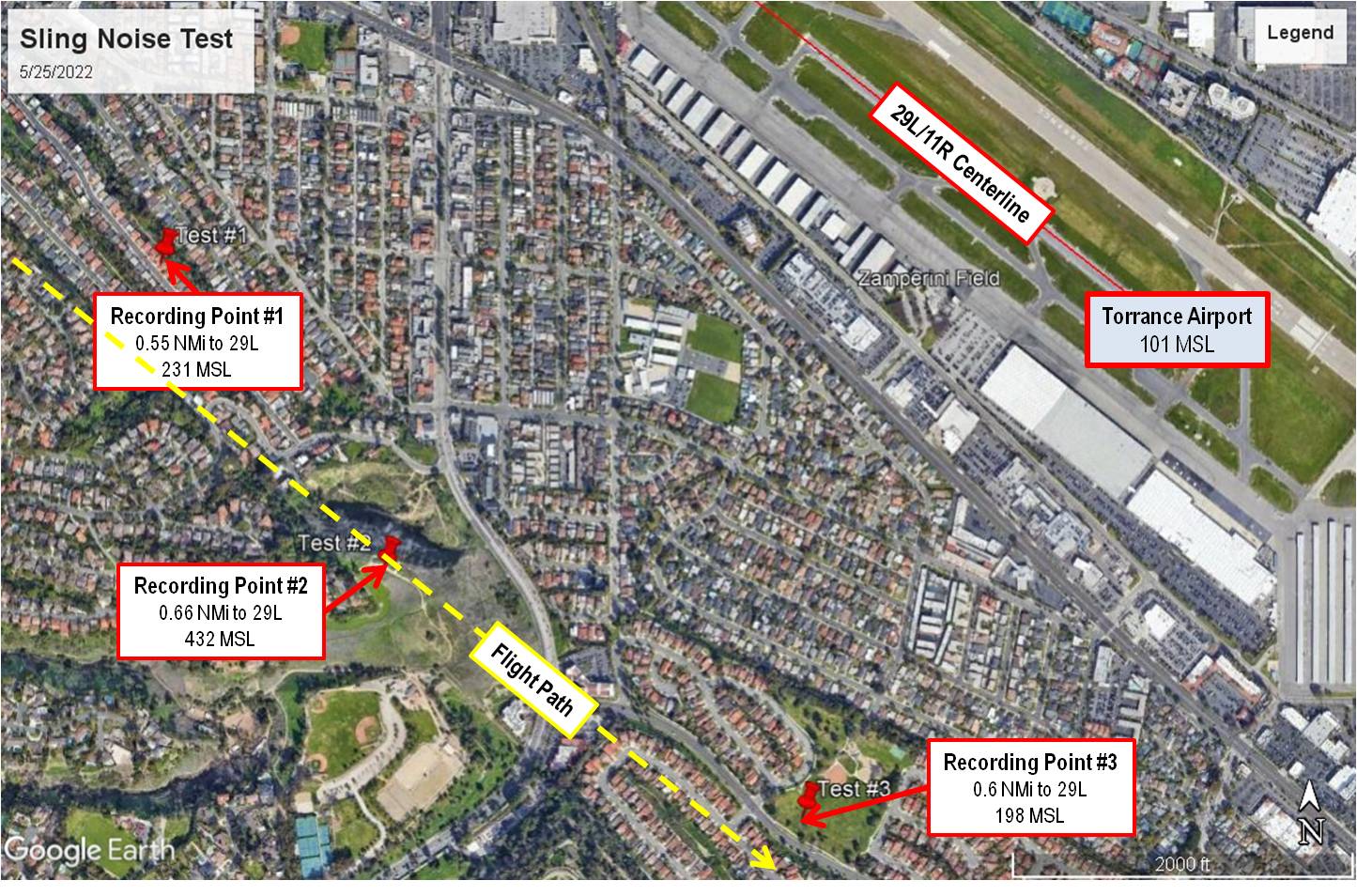 |
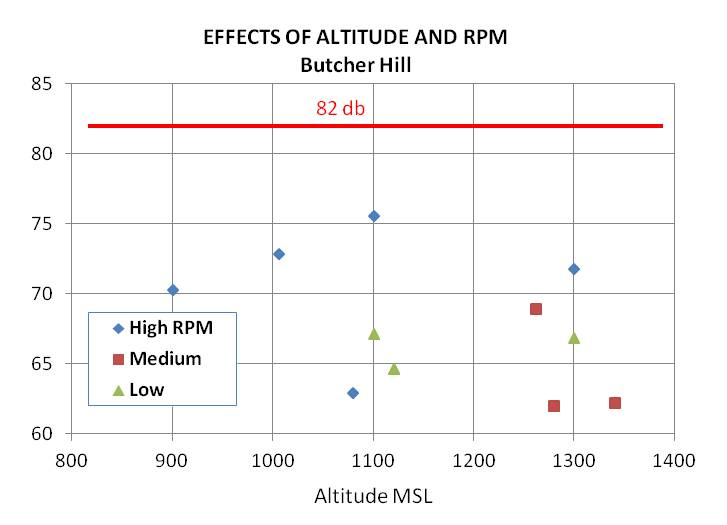 |
As this graphic illustrates, it was more difficult to discern the small effects of altitude on noise. This graphic clearly does show that reduced RPM results in significantly lower sound readings.
The graphic also shows that the Sling training aircraft do not exceed the 82 db(A) limit–even at lower altitude and high RPM.
|
Geographical references:
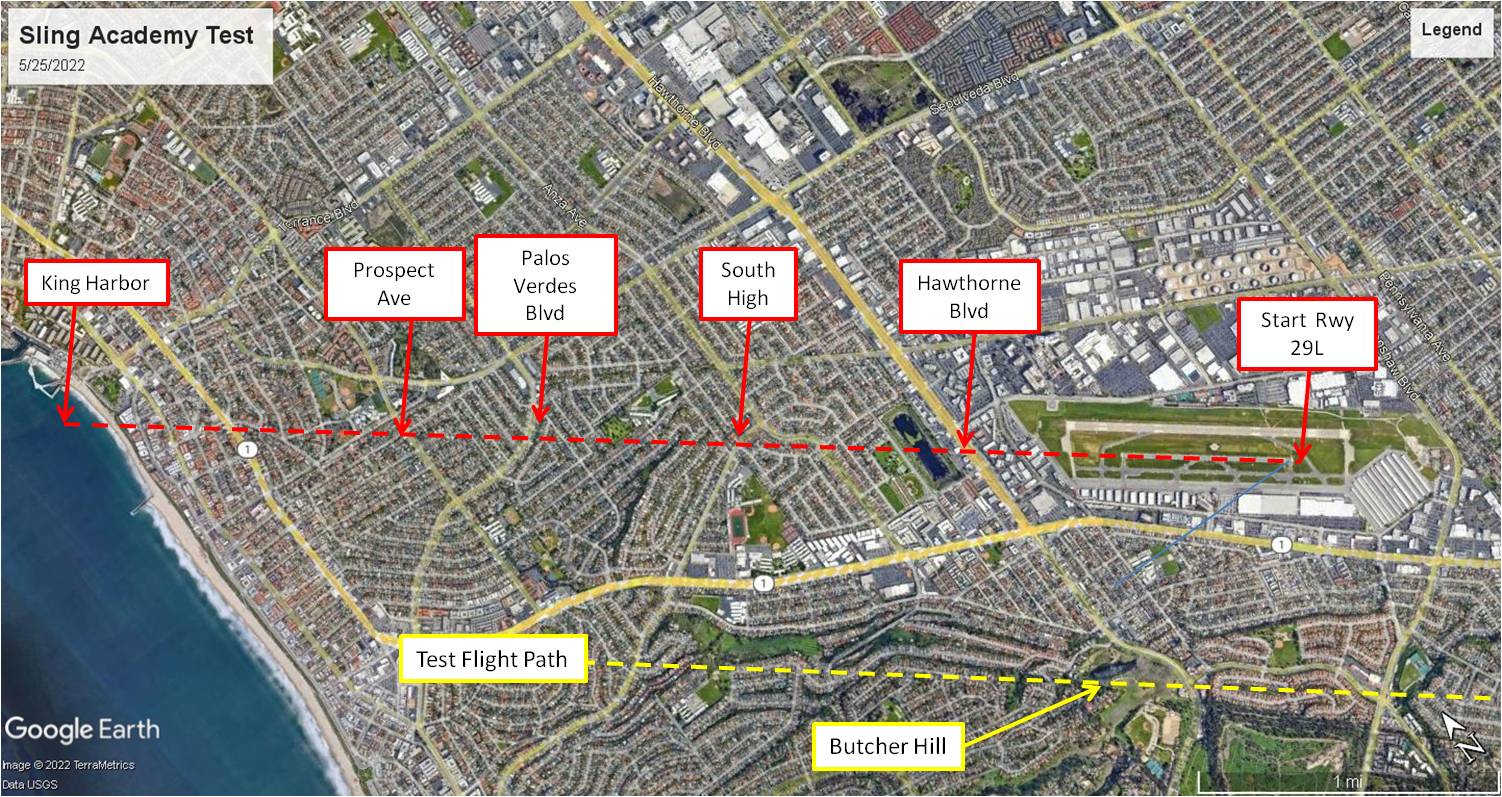
New “Whisper” Model of our Airplane
 Since mid-2023 we have been actively engaged in a Research & Development program to make our airplanes even quieter than they already are.
Since mid-2023 we have been actively engaged in a Research & Development program to make our airplanes even quieter than they already are.
- The program has focused on making the sound more pleasing to the human ear by decreasing the pitch and muffling the sound. We are going for a ‘low hum’.
- Modifications include muffler and long Silencer, propeller and acoustic damping of the engine compartment.
- The long Silencer (also known as a “Swiss Muffler”) extends under the fuselage and exits behind the wing, upwards, to limit noise on the ground.
- Results are extremely encouraging and we intend to continue with this program until we find the best result to adopt fleet-wide.
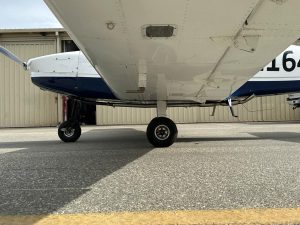
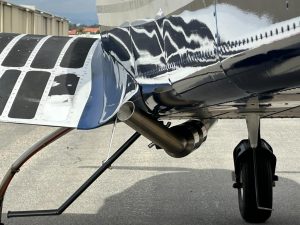
Voluntary Procedures
In January 2023, Sling Pilot Academy and other flight schools based at KTOA made a “voluntary” agreement to follow enhanced noise abatement procedures to further minimize the impacts of the airport on noise-sensitive neighboring communities. Following these procedures is mandatory for all Sling Pilot Academy Students, Flight Instructors and Renters, except in instances where safety in jeopardized by following these procedures. Not following these procedures (when a safety hazard is not the reason for non-compliance) can be grounds for dismissal from the Academy as a Pilot or Instructor. So, we have volunteered to enter this agreement with the City of Torrance, but it is mandatory for our pilots, unless a safety hazard prevents following these procedures.
Noise Abatement Background
When it comes to following this Voluntary Noise Abatement Agreement, it is important to review some background, which can sometimes appear contradictory and difficult to understand. See our full procedure to understand:
KTOA Noise AbatementSling Whisper Unveil
Sling Whisper Breakdown

